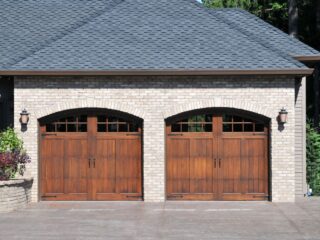
When it comes to closet doors, there are a variety of options to choose from. In this article, I’ll be discussing the different types of sliding closet doors that can enhance the functionality and aesthetics of your space. Sliding closet doors are a popular choice for many homeowners due to their space-saving design and sleek appearance. Whether you’re looking for a modern and minimalist look or a more traditional style, there is a sliding closet door option that will suit your needs.
One of the most common types of sliding closet doors is the bypass door. This type of door consists of two or more panels that slide past each other on a track. Bypass doors are a great choice for tight spaces as they do not require any additional floor space for opening and closing. They are also easy to install and maintain, making them a practical option for any home.
Another popular type of sliding closet door is the mirrored door. Mirrored doors not only serve a functional purpose but also have the added benefit of making a space appear larger and brighter. These doors are perfect for bedrooms or dressing areas where you can easily check your outfit or appearance before stepping out. With their reflective surface, mirrored sliding closet doors can add a touch of elegance and sophistication to any room.
Lastly, there are also panel sliding closet doors, which consist of large panels that slide horizontally to open and close. These doors offer a more traditional and classic look, making them a great option for those who prefer a timeless design. Panel sliding closet doors can be made from a variety of materials such as wood, glass, or even metal, allowing you to choose the one that best suits your style and preferences.

Types of Sliding Closet Doors
When it comes to sliding closet doors, there are several options to choose from. Each type offers its own unique features and benefits. In this section, I’ll discuss three popular types of sliding closet doors: bypass doors, multi-fold doors, and pocket doors. Let’s dive in!
Bypass Closet Doors
Bypass closet doors are a practical choice for tight spaces. These doors consist of two or more panels that slide past each other on a track. The panels overlap when closed, allowing for easy access to the closet. The great thing about bypass doors is that they don’t require any floor space for swinging open, making them ideal for small rooms or narrow hallways.
With bypass doors, you have the flexibility to choose between different panel designs. You can opt for a traditional look with solid wood panels or go for a more contemporary style with frosted or textured glass panels. The choice is yours!
Multi-fold Closet Doors
If you’re looking for a versatile and space-saving option, multi-fold closet doors are worth considering. These doors consist of multiple panels that fold in on themselves when opened, creating a compact stack. This design allows for maximum access to the closet while minimizing the amount of space required.
Multi-fold doors are commonly made of wood or vinyl and come in a variety of finishes and styles. You can choose from traditional raised panel designs or opt for a more modern and sleek look with flat panels. Some multi-fold doors even feature glass inserts, adding a touch of elegance and allowing light to flow between rooms.
Pocket Closet Doors
Pocket doors are a fantastic option if you’re looking for a sleek and minimalist design. These doors slide into a hidden pocket within the wall, completely disappearing from view when opened. This not only saves space but also creates a clean and unobstructed look.
Pocket doors are available in various materials, including wood, glass, and even metal. They can be customized to fit your desired aesthetic, whether it’s a rustic wooden door or a contemporary glass door with a frosted or etched design.
One of the main advantages of pocket doors is their ability to maximize usable space. Since they don’t swing open or take up valuable floor space, pocket doors are an excellent choice for small rooms or areas with limited clearance. They also provide a seamless and uninterrupted flow between rooms, enhancing the overall design and functionality of your space.





